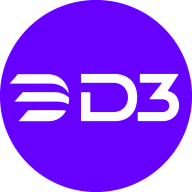

D3 Security and Microsoft Sentinel compete in the security solutions space, enhancing threat detection and response capabilities. Microsoft Sentinel has an edge with its comprehensive features, while D3 Security is often preferred for its favorable pricing and support.
Features: D3 Security offers automation-focused capabilities with strong incident management, customizable workflows, and versatile functionality. Microsoft Sentinel provides advanced threat intelligence, seamless integration with Microsoft services, and a robust feature set that enhances security posture.
Ease of Deployment and Customer Service: D3 Security's deployment process is straightforward, supported by responsive customer service aiding fast implementation. Microsoft Sentinel utilizes Azure cloud integration for scalability, requiring more initial configuration, but Microsoft's resources offer strong customer support.
Pricing and ROI: D3 Security is notable for favorable pricing structures focusing on returns through automation efficiencies. Microsoft Sentinel may appear more costly but justifies this with its feature depth and integration within Microsoft, leading to a perceived higher ROI over time for enterprises invested in Microsoft solutions.


D3 Security provides a full-lifecycle incident management platform—one that enables multiple detection sources, enriches standards-based workflows with threat intelligence, orchestrates response, and always guides its users to conclusive remediation. The system is unique in its ability to eliminate incident recurrence, through root cause and corrective action discovery, digital forensics case management, and by generating a foundation of actionable intelligence that supports policies, countermeasures and controls.
Microsoft Sentinel is a scalable, cloud-native, security information event management (SIEM) and security orchestration automated response (SOAR) solution that lets you see and stop threats before they cause harm. Microsoft Sentinel delivers intelligent security analytics and threat intelligence across the enterprise, providing a single solution for alert detection, threat visibility, proactive hunting, and threat response. Eliminate security infrastructure setup and maintenance, and elastically scale to meet your security needs—while reducing IT costs. With Microsoft Sentinel, you can:
- Collect data at cloud scale—across all users, devices, applications, and infrastructure, both on-premises and in multiple clouds
- Detect previously uncovered threats and minimize false positives using analytics and unparalleled threat intelligence from Microsoft
- Investigate threats with AI and hunt suspicious activities at scale, tapping into decades of cybersecurity work at Microsoft
- Respond to incidents rapidly with built-in orchestration and automation of common tasks
To learn more about our solution, ask questions, and share feedback, join our Microsoft Security, Compliance and Identity Community.
We monitor all Security Orchestration Automation and Response (SOAR) reviews to prevent fraudulent reviews and keep review quality high. We do not post reviews by company employees or direct competitors. We validate each review for authenticity via cross-reference with LinkedIn, and personal follow-up with the reviewer when necessary.